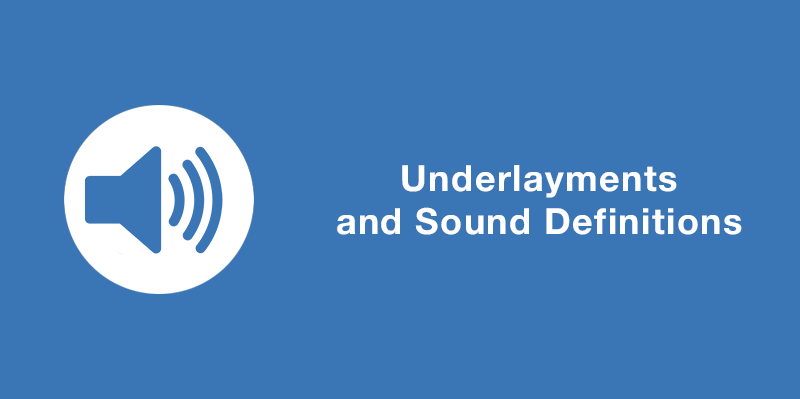Underlayments and Sound Definitions (IIC – STC – Delta IIC)

Probably one of the commonly known purposes for using a flooring underlayment beneath certain types of flooring is “acoustic benefit”. In other words, dampening unwanted noise from traveling to other rooms, especially multifamily housing where living quarters are built upon each other. While there’s no reliable, recognized scientific test for measuring sound deadening within the installed room, there are several recognized ASTM lab tests that use science to help measure unwanted noises that are attributed to impact and airborne sounds and how much of either transfer through a floor-to-ceiling assembly into living space below the installation.
There are common industry Acronyms that are commonly published on product packaging. Let’s review those now!
STC – Sound Transmission Class – is a lab testing score used to determine airborne sound transmission loss for typical noises such as televisions, stereos, voices etc. The higher the STC rating, the greater the effectiveness of a material or floor-to-ceiling assembly construction to reduce the transmission of airborne sound. In essence, the objective is to achieve noise reduction, by using underlayments with a high STC rating in order to block some of the sound energy.
IIC – Impact Isolation Class – is a lab testing score used to determine the amount of impact noise isolation. Same as with STC ratings we just discussed, the higher the rating, the more effective the floor or ceiling assembly is at isolating vibrations and absorbing impact sound, such as footsteps from someone walking on the floor above or other objects that collide with the floor covering.
Now, much like the IIC – a Delta IIC rating shows what the underlayment adds to the assembly in terms of impact sound isolation. It is the difference between the total IIC achieved once the construction is acoustically treated and the IIC the material has prior to being acoustically treated. For example, If the floor construction has an IIC of 40 and once an impact sound underlayment is added the construction achieved an IIC of 70, then the Delta (change) IIC is 30. This rating isn’t used very often; reason being is that most company’s use IIC to demonstrate a higher reduction rating.
Delta IIC is the best rating to consider when comparing the impact sound performance of different materials as it doesn’t allow for misleading results; it provides the IIC rating of the product rather than of the entire assembly. Understanding the common language, when it comes to sound and its meaning, can be especially useful when you are shopping for the best underlayment that deadens sound for your installation.
If you want to look at our sound rating test for each flooring underlayment, click here to view our sound rating chart.
If you have a floor and not sure what flooring underlayment to choose, you can use our product selector tool by clicking here.

[thrive_leads id=’1926′]
Join Our Newsletter
You are about to install your new flooring. As you lay the first plank you realize that
